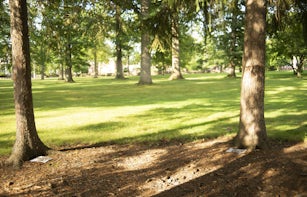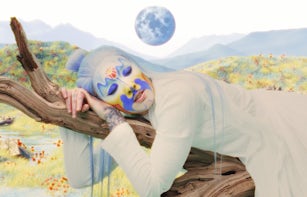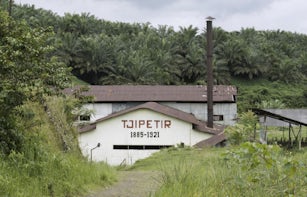
Over the past two centuries the visible, material and symbolic boundaries of Africa have constantly expanded and contracted.… New forms of territoriality and unexpected forms of locality have appeared. Their limits do not necessarily intersect with the official limits, norms or language of states.
– Achille Mbembe 01
History is the science of the state, while memory is the art of the stateless.
– Wendell Hassan Marsh 02
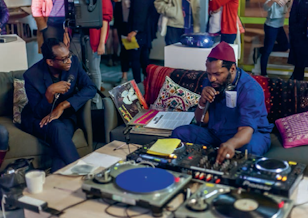
It has often been said that cartography is the tool of the colonial project. But it is rarely acknowledged that mapping has remained a major instrument of political and economic interests beyond the colonial project. A few years ago writer Billy Kahora travelled to a region on the southern edge of the Great Rift Valley in Kenya that forms part of the Mau Forest Complex, the largest forest area in East Africa.03 The complex is a water catchment of more than ten rivers and numerous lakes in both East and Central Africa. It was once said to occupy 273,300 hectares, three times the size of Nairobi’s administrative district. Kahora was there to write about the eviction of what were being described as ‘encroachers’, or landless peasants from neighbouring tribes; he noted the buzzword, which proved as unyielding as the claims of the people being described thus.
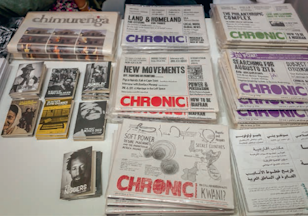
‘Squatter’ had always been the term of choice in such circumstances, and Kahora became curious about this relatively new term, encroacher, and its connotations. The difference, in the context of the Mau, is simply that an encroacher is seen to be a ‘foreign invader’, and a squatter is a propertyless individual from within. The squatter is considered to be relatively harmless, while the encroacher seizes and intrudes on property that has been clearly mapped and is already owned. There is a primordial hatred towards encroachers by locals, while some impatient tolerance seems to exist for the squatter. At the heart of all this was an attempt by the encroachers to change the map. Encroachers seize territory, change maps to their advantages. Squatters do not threaten the cartographical status quo.
This seemingly harmless distinction completely changed things in the Mau scenario. These so-called encroachers were the tip of an attempt at one of the largest land grabs in Kenya’s history: they were the most visible manifestation of the attempted abuse of one of two instruments that govern the process of land ownership, cartography, which in this context can be described using the less grand term ‘survey’.
Survey, like encroachment, was a ubiquitous term in the Mau saga, used invariably by both the communal owners of the land and the encroachers. This modern word had entered the lingo to justify illegal actions – ‘survey this’ and ‘survey that’ – and had also been appropriated by the victims into something that was itself illegal, hostile to the old ways. So, as Kahora discovered in the depths of the Mau, one of the biggest untold stories about our continent is the abuse of the technical aspects of the land survey. What is measured point by point on the ground, and the representation that tallies this exact measurement, can be changed arbitrarily if no one is fighting for a neutral and epic-sized territory such as the natural space of a forest. A land surveyor might be instructed by powerful political and economic interests to redraw a map of the original piece of land, to eat up a forest. This disregard of natural boundaries in favour of new and recreated boundaries is at the heart of the problems of our knowledge of self, of our spaces and of our territories. But a contestation of who the land belongs to and who is new, who is local and who is an encroacher, is at the heart of the struggles against our official atlas.
More than the abuse of law, especially as regards land, it is this disregard for preexisting boundaries and organically emerging ones that has given lie to what our territories really are and what they mean. And so, lately, the primary entity of how we understand our spaces, the nation-state – the result of the colonial survey, accepted by the independent African nation – is for this exact reason coming under extreme duress. In the context of the colonial instrument of the land survey and its counterpart, the land legislation regime, our continent seems to be reverting to its earlier knowledges of territory against the more recent colonial and postcolonial instrument of cartography – against ‘survey’ – while also exerting newly emerging knowledges and ways of thinking against the same instrument.
Our atlas is therefore now being reshaped into territories of new religious ecumenisms that are related to Christianity, Islam and African religions; sexual and pleasure territories; contemporary migratory phenomena manifested in refugee camps that produce armies without a state, making war a phenomenon that is disconnected from the state; and resource-based territorialities where water is especially key (issues around the Nile indicate this phenomenon).
So, we ask: What were the precolonial visible, material and symbolic boundaries and what is their relationship with official state boundaries today? What are the new forms of territoriality and unexpected forms of locality? How does one now represent Greater Somalia? What of the Swahili Coast that extends from Kenya through Tanzania and Northern Mozambique, of its reluctance to be integrated into any national project other than its own, which goes back to the fourteenth century? What of the transnational identity of the Tuareg across the Sahel belt, who are at the core of several conflicts in that region, from Libya to Mali and Chad? What are the African names of the Indian Ocean? And as a site of world-making, what role did this ocean-territory play in the emergence of Third World politics? What are the new divisions of the world and how do they affect our continent – from the war on terror to the Sahara-Mediterranean as boundary? Who are the neo-pats and re-pats (new and returning migrants), and where do they come from? What are the new capitals – for the church-industrial complex of Anglophone West Africa, for example? Or for the drug trade in East Africa?
So, we ask: What if maps were made by Africans for their own use, to understand and make visible their own realities or imaginaries? How do we, on the continent, create a cartography that is so exactingly representative of our fluidities, complexities and material realities?
Jorge Luis Borges’s fable ‘Del rigor en la ciencia’ (‘On Exactitude in Science’, 1946) might be a good start for such work. An exacting representation, cartography or series of maps can only start with an attempt to understand every inch, foot, unit of measurement of the thing we claim to stand on as our own, our continent. The territory we claim as collectively ours. The reality we all take on. The knowledge we herald as our own. This approach suggests that the optimal way to real ownership is to map one’s reality; to make an exacting representation, point for point, centimetre for centimetre, whether it is land, water, dreams. Then, after possibly understanding one’s reality in its minutiae, to earn the right to work on a replication, to create real understanding and knowledge. If this is done right, the representation should be directly proportional to the confidence of one’s knowledge.
This work requires that we reaffirm lived experience, improvisation and imagination as forms of knowledge. It calls for a knowing-through-seeking and a constant transforming and renewing of our image of the world.
This is important because over time the few and powerful on our continent have excelled, to their advantage, in creating an atlas without exactitude. Therefore, our knowledge of the territory is never ours. At the same time, a too exacting knowledge would be useless; a too representative approach would distance us from the real. We also need our own modes of representation on our own terms, our own materialities and needs.
The task is to develop maps that are based on a multiplicity of scales and projections, and a multiplicity of symbolisation – a river can be a body of water and can be a sacred being. Scales, set squares and compasses alone will not work; we also require hands, feet and hearts. And memory.
The following maps are part of an atlas of our discontent at misrepresentations, an ongoing attempt to represent our knowledge of our spaces with some exactitude. It is also an attempt to balance exactitude and representation.

